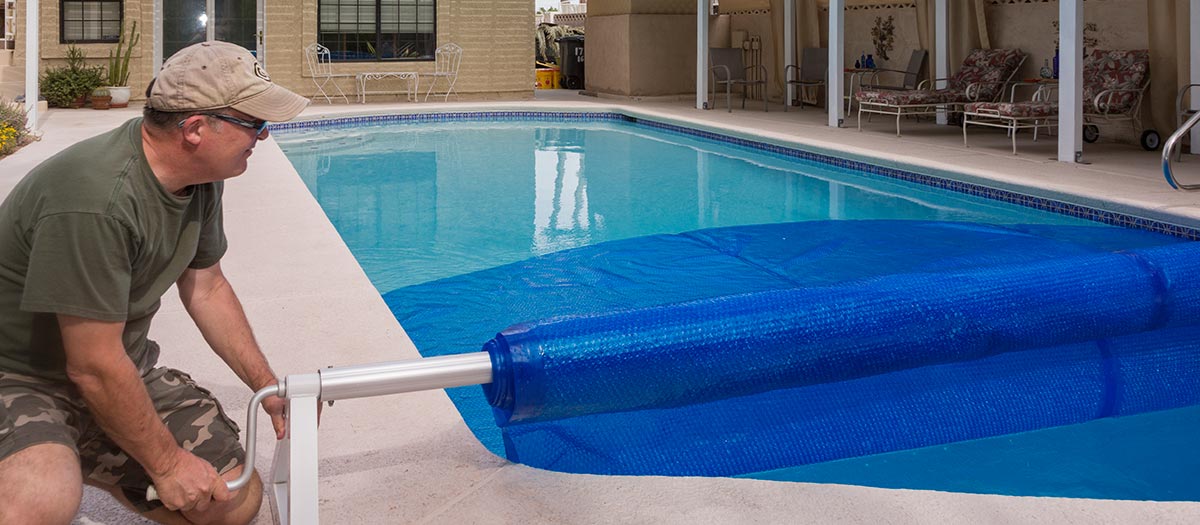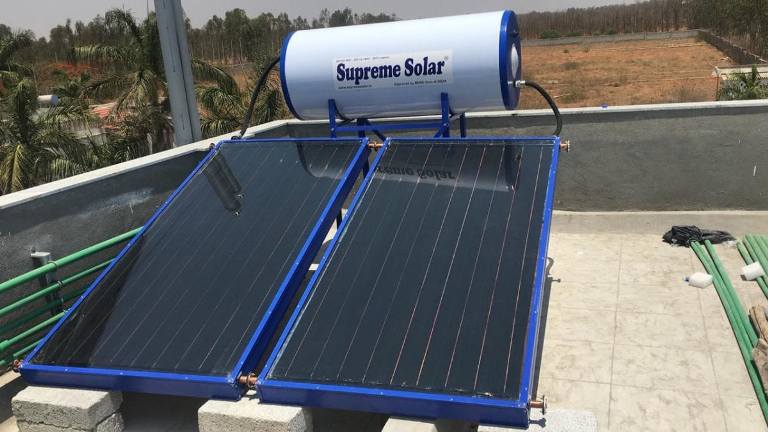Everyone loves homes that have swimming pools! If you live in a warm part of the world, chances are you would be enjoying your outdoor swimming pool at least three months every year.
Backyards with pools are fun party venues, especially for kids and teenagers. Indoor pools are also great; you don’t even need to worry about the weather when using one!
Swimming is a great exercise for adults and children alike, and with a pool installed in your home, you can go for a swim any time you want.
While having your own swimming pool is indeed a great idea, you also need to keep in mind that maintaining a swimming pool in pristine condition is expensive and energy-intensive.
Today, a swimming pool has basically turned into a money and power-hungry facility in most American homes. It costs approximately $3,000-$5,000 on average to maintain a swimming pool per year.
However, by adopting a few swimming pool energy-efficiency and energy conservation methods, it is possible to reduce your power costs by as much as 50% -70%!
Here are some useful energy-efficient tips for your swimming pool.
1. Switch To A More Energy-Efficient Pump
There are several types of swimming pool pumps available, and choosing the right one plays a major role in determining your energy consumption. In houses with pools, the pump is usually the largest user of electricity.
Replacing your existing pump motor with a more energy-efficient pump does involve some financial investments upfront, but it is more pocket-friendly in the long run.

Using variable-speed pumps is also a great option. The lower speed options offered by such pumps are far more efficient. If used correctly, these pumps can reduce pool pump energy costs by approximately 25%.
Another important factor to keep in mind is that all electricity companies aren’t the same.
Shifting to a green energy provider like Spark Energy helps you decrease your carbon footprint and be more energy-efficient while maintaining affordability and reliability.
Since maintaining a swimming pool is energy-intensive, it is worthwhile to move to more sustainable and renewable options.
2. Upgrade To LED Lights
Another surprisingly simple way of saving energy is to replace your swimming pool’s incandescent bulbs with LED lights. LED lights offer a host of benefits as they use less energy and have a longer life span.
LED inground pool lights require less than 50 watts to create the same light output that traditional incandescent and halogen pool lights can take up to 300 watts to create.

By replacing your pool lights with LED lights, you can cut your energy expenses to a great extent. LED pool lights also add to the aesthetic appeal of your pool.
Solar-powered pool lights are another aesthetically appealing energy-efficient option. These lights are charged by solar power in the day and used for lighting in the night.
3. Ensure Proper Water Circulation
Good water circulation is necessary to keep the chemicals in the water evenly mixed and keep the pool cool during the hot summers.
It also helps keep the pool free of debris by passing the water through the filters. However, it is a myth that longer circulation cycles prevent algae growth–it may or may not.
The best way to fight algae growth is to use anti-algae chemicals. Regularly scrubbing the pool surfaces is also necessary to control algae.
To bring down your energy usage, reduce the filtration time to six hours per day. You can increase the time in half-hour increments if you are not satisfied with the water quality after six hours.
Install a timer for better control over the pump’s cycling. Running several short cycles throughout the day is a good idea to keep debris from collecting. Unclog your filters regularly to keep the system working optimally.
4. Use Solar Pool Covers
Solar pool covers are not just great for keeping your pool protected, but they also help you conserve energy. These covers prevent the heat from escaping and heat the water by trapping the heat underneath.
Since solar pool covers are inexpensive to install, they are easy on your pockets. By forming a physical barrier to prevent evaporation, a pool cover can reduce water loss by more than 80%.

Maintaining a clean pool entails many costs, and using a pool cover is an easy way of protecting your pool from collecting dirt, leaves, and other debris.
A cleaner pool is easier to maintain, uses less chlorine, and doesn’t require the filter to work as intensively.
Since sunlight can degrade chlorine, using a pool cover can also help bring down the amount of money you spend on chemicals.
5. Choose A High-Efficiency Or Solar Water Heater
To maintain the water in the swimming pool at a comfortable temperature, many homeowners leave on their pool water heaters for hours at a time.
The World Health Organization (WHO) recommends water temperatures ranging from 78 to 86 degrees Fahrenheit for moderate physical activity in a swimming pool.

To conserve energy while maintaining the optimum range of water temperatures, choose a high-efficiency water heater.
Water heaters come in various sizes, and you have to choose the one best suited to your needs.
Subscribe to an eco-friendly energy system like the Ambit Energy Green-e Energy certified program and consider installing a solar water heater to bring down your dependence on non-renewable energy sources.
A solar heating system integrated with your swimming pool can meet up to 80% of the heating and energy requirements of your pool.
While it is not feasible to harness the sun’s power for your pool’s heating requirements throughout the year, it is a great option for the summer months.
Final Take
If you enjoy having your own pool at home but are concerned about the energy consumption and your ever-rising electricity bill, relax!
There are many practical ways to minimize the energy used by your pool and bring down the maintenance costs.
Switch to a more energy-efficient pump, get LED lights installed, minimize the use of your water heater, and ensure proper water circulation in your pool.
Just start taking these practical steps today and enjoy your swimming pool for years to come without any worry!
